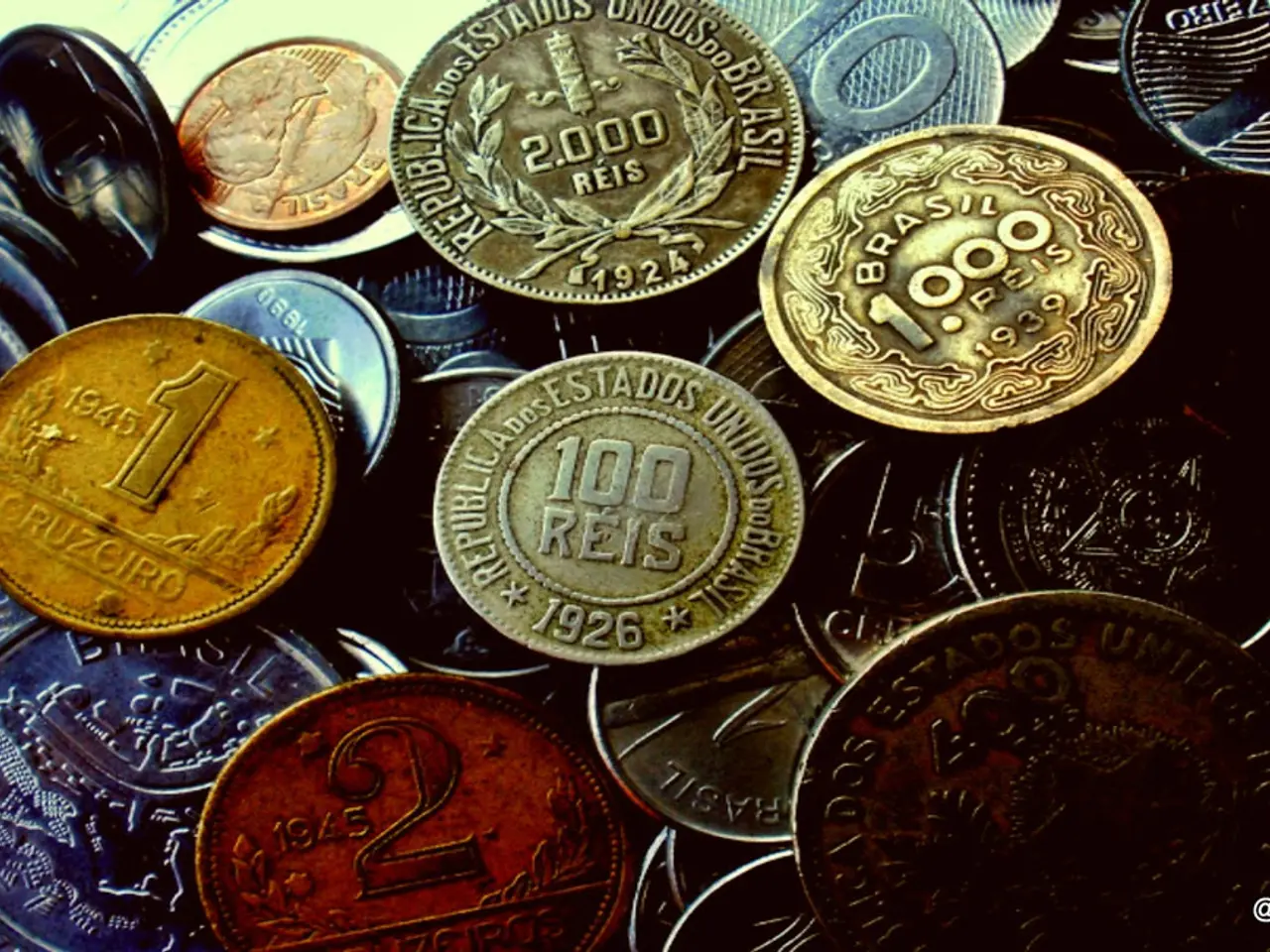Digital currencies, specifically stablecoins, are gaining traction over Central Bank Digital Currencies (CBDCs) amidst the cryptocurrency surge in South Korea's digital transformation.
In a significant move towards digital finance, South Korea's eight leading banks, including KB Kookmin, Shinhan, Hana, Woori, and NH Nonghyup, are collaborating to launch a won-backed stablecoin. The project, aimed at facilitating digital payments, fast transactions, and protecting the local economy from global volatility, is expected to launch around late 2025 or early 2026 [1][3].
The stablecoin will be pegged to the South Korean won, aiming to reduce reliance on US dollar-backed stablecoins and protect the local economy from global financial volatility and capital flight - a priority emphasized by President Lee Jae-myung [2]. This consortium is a private sector-led effort, distinct from the central bank’s digital currency (CBDC) project, which South Korea's central bank has temporarily suspended in light of growing momentum behind local stablecoins [1][4].
The initiative enjoys support from blockchain nonprofits and financial telecommunications institutions within South Korea, underscoring a collaborative approach blending traditional banking and blockchain technology [1][3]. Regulation is a critical focus. Lawmakers are advancing the Digital Asset Basic Act, which aims to create a regulatory framework for stablecoin issuance and use, providing legal clarity and boosting market confidence [1][3][4].
Alongside the banks, major tech companies like Kakao and Naver are actively involved, applying for licenses to issue their own stablecoins integrated into mobile payment platforms. Their participation signifies the integration of fintech innovation with traditional banking to promote more agile financial services for millions of users [2][4].
The planned stablecoin will likely operate under a trust-based or 1:1 deposit token model, subject to regulatory approval, ensuring stability and user confidence in the digital asset [3]. South Korea's strategic shift from CBDC to stablecoins represents a decisive step in global financial evolution, creating an ideal ecosystem for stablecoins to thrive.
The growth of digital technology and cryptocurrency-related stocks in South Korea reflects market confidence in the new ecosystem. One in five South Korean citizens own and operate cryptocurrencies, indicating a strong interest in digital assets. The market capitalization of stablecoins exceeds $257 million [1].
The Bank of Korea has expressed interest in monitoring and overseeing the evolution of stablecoins, aiming to avoid risks associated with volatile stablecoins and maintain public and financial sector confidence [1]. The regulatory framework aims to create a harmonious coexistence between private stablecoins and bank-issued tokens.
South Korea's move towards stablecoins is part of a broader strategy to strengthen financial independence and counter the dominance of foreign dollar-pegged stablecoins in the domestic market [1][2][3][4]. The collaborative approach between South Korean banks and tech giants is shaping a reliable and transparent digital economy that could position South Korea as a global leader in responsible adoption and regulation of digital assets.
References: [1] CoinTelegraph (2022). South Korea's Major Banks to Launch Won-Backed Stablecoin in Late 2025. Retrieved from https://cointelegraph.com/news/south-koreas-major-banks-to-launch-won-backed-stablecoin-in-late-2025 [2] Yonhap News (2022). South Korean President Emphasizes Importance of Stablecoins in Election Campaign. Retrieved from https://english.yonhapnews.co.kr/news/2022/03/15/CO20220315005000006.html [3] Forkast (2022). South Korea's Top Banks to Launch Won-Backed Stablecoin in Late 2025. Retrieved from https://forkast.news/south-koreas-top-banks-to-launch-won-backed-stablecoin-in-late-2025/ [4] CoinDesk (2022). South Korea Pauses CBDC Development, Focuses on Stablecoins. Retrieved from https://www.coindesk.com/policy/2022/03/07/south-korea-pauses-cbdc-development-focuses-on-stablecoins/
The strategic collaboration between South Korean banks and tech giants aims to create a digital economy that integrates traditional finance with technology, specifically through the launch of a won-backed stablecoin for digital payments and transactions [3]. This collaborative approach in lifestyle and technology sectors, accompanied by regulatory reforms, is also expected to bolster the entertainment industry due to the growing interest in digital assets among South Korean citizens [1].




